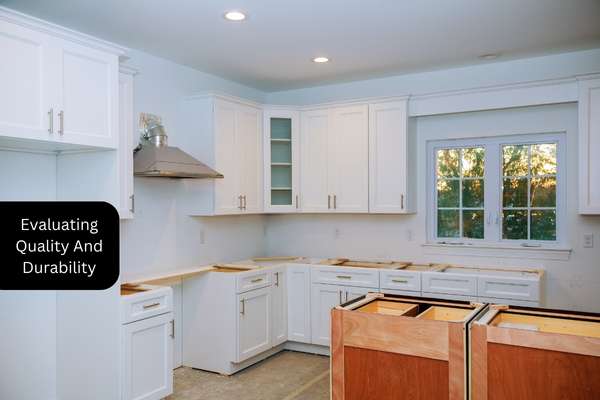A lateral file cabinet is a specialized storage unit commonly found in offices and professional settings. It is designed to store and organize files horizontally, with drawers that extend from side to side rather than front to back, as in traditional vertical file cabinets. Lateral file cabinets offer an efficient and space-saving solution for storing and accessing documents, making them essential components of organizational systems in professional environments. In this article, We will explore the definition and purpose Of lateral file cabinets, highlight the importance of organizational systems, And provide an outline of the topics to be covered.
Key Features And Design
1. Dimensions And Sizing Options
Lateral file cabinets come in various dimensions and sizing options to accommodate different storage needs. Common widths range from 30 to 42 inches, while heights typically vary from 28 to 60 inches. The depth of the cabinet is usually around 18 to 20 inches, allowing for ample space to store files of various sizes.
2. Drawer Configurations And Capacity
Lateral file cabinets offer multiple drawer configurations to suit different organizational requirements. They can have two to five drawers stacked horizontally, with each drawer capable of holding files from front to back. The drawers often feature full-extension glides, allowing easy access to the entire contents. The capacity of each drawer varies, with typical options ranging from 150 to 200 pounds.
3. Locking Mechanisms And Security Features

To ensure the confidentiality and security of sensitive documents, lateral file cabinets often include locking mechanisms. These may be built-in locks on individual drawers or a central locking system that secures all drawers simultaneously. Some cabinets also offer options for additional security features like digital locks or combination locks.
4. Construction And Durability Considerations
Lateral file cabinets are built with durability in mind, as they need to withstand the weight of files and frequent use. They are commonly constructed from materials like steel or wood. Steel cabinets are known for their strength and resistance to impact, while wooden cabinets provide a more aesthetic appeal. Reinforced corners, sturdy frames, and ball-bearing suspension systems are often incorporated to enhance the overall durability and stability of the cabinet.
5. Aesthetics And Finishes Available

Lateral file cabinets come in a range of aesthetic options to complement various office decor styles. Steel cabinets are typically available in neutral colors like black, gray, or beige, while wooden cabinets offer a broader range of finishes, including natural wood tones or painted options. Change cabinet color. The choice of finishes allows the cabinet to blend seamlessly with the overall office design.
Benefits And Advantages
1. Space Efficiency And Storage Capacity

Lateral files cabinets are designed to maximize space utilization in offices. Their horizontal orientation allows for easy placement against walls or under desks, making them ideal for compact workspaces. Additionally, lateral cabinets offer generous storage capacity, as the wide drawers can accommodate a larger volume of files compared to vertical cabinets.
2. Ease Of Access And Organization

With lateral file cabinets, accessing and organizing files becomes more convenient. The side-to-side drawer configuration allows for easy visibility and access to files, eliminating the need to shuffle through stacks of papers. Files can be arranged in a logical order, Such as alphabetically Or by category, making it simpler to locate and retrieve specific documents.
3. Enhanced File Visibility And Retrieval
Unlike vertical cabinets, where files are stacked one on top of another, lateral files cabinets provide a clear view of file labels and contents. This improved visibility minimizes the chances of misfiling and ensures faster and more accurate retrieval of documents. It also reduces the risk of damaging or misplacing files during the retrieval process.
4. Compatibility With Various File Formats (Letter, Legal, Etc.)
Lateral file cabinets are designed to accommodate different file formats commonly used in professional settings. They can store both letter-sized and legal-sized documents without the need for additional accessories or adjustments. This versatility allows for seamless integration into existing filing systems without the need for reformatting or reorganizing files.
5. Potential For Customization And Expansion
Lateral files cabinets offer flexibility in terms of customization and expansion. Many models come with adjustable drawer dividers or shelves, allowing users to customize the interior space based on their specific storage needs. Additionally, lateral cabinets can be easily expanded by adding additional units or stacking cabinets vertically, providing scalability as the filing requirements grow.
Considerations For Purchase
1. Assessing Storage Needs And Space Availability

Before purchasing a lateral file cabinets, assess your storage requirements and the available space in your office. Consider the volume of files you need to store and the size of documents you typically handle. Determine whether you need A cabinet with two, three, four, Or more drawers based on your storage needs. Measure the area where the cabinet will be placed to ensure it fits comfortably without obstructing walkways or other furniture.
2. Budget Considerations And Cost Factors
Set a budget for your lateral file cabinet purchase and consider the cost factors involved. Prices can vary based on factors such as materials, brand reputation, size, And additional features. It’s important to balance your budget with the quality and durability of the cabinet to ensure a worthwhile investment.
3. Evaluating Quality And Durability

Consider the quality and durability of the lateral file cabinet. Look for cabinets made from sturdy materials like steel or solid wood that can withstand regular use and provide long-term durability. Check for reinforced corners, robust drawer glides, and a solid construction that will withstand the weight of files without sagging or warping.
4. Ergonomics And User-Friendly Features
Evaluate the ergonomics and user-friendly features of the lateral file cabinet. Look for cabinets with smooth drawer operation, full-extension glides, and easy-to-use handles or knobs. Consider features like anti-tip mechanisms to ensure stability when multiple drawers are open simultaneously. Ergonomic considerations can improve user experience and productivity.
5. Integration With Existing Office Furniture And Decor
Consider how the lateral file cabinet will integrate with your existing office furniture and decor. Look for cabinets that match or complement the aesthetic of your workspace, Whether it’s A sleek and modern office or A more traditional setting. Consider color options, finishes, and styles that will seamlessly blend with the overall design of your office environment.
Maintenance And Care

1. Cleaning And Upkeep Of Lateral File Cabinets

Regular cleaning is important to keep lateral files cabinets in good condition. Dust the exterior and interior surfaces using a soft cloth or duster. Avoid using abrasive cleaners or harsh chemicals that may damage the cabinet’s finish. If spills or stains occur, clean them immediately using a mild soap solution and a soft cloth. Ensure the cabinet is completely dry before placing files back inside.
2. Proper Handling And File Organization
Handle files with care when placing them in or removing them from the lateral file cabinet. Avoid overloading drawers beyond their recommended weight capacity to prevent damage to the cabinet’s structure and drawer glides. Organize files logically using labels, dividers, or folders to facilitate easy retrieval and maintain a neat and organized filing system.
3. Maintenance Of Locking Mechanisms And Hardware
If your lateral file cabinet has locking mechanisms or hardware, periodically check and maintain them. Lubricate the lock and hinges with a graphite-based lubricant or silicone spray to ensure smooth operation. Clean the keyholes regularly to remove any debris or dust that may hinder proper locking or unlocking.
4. Addressing Common Issues And Troubleshooting
Be proactive in addressing common issues that may arise with lateral files cabinets. For example, if a drawer is not closing or opening smoothly, check for any obstructions or misaligned files. Adjust or realign the files as needed. If there are issues with the locking mechanisms, refer to the manufacturer’s instructions for troubleshooting steps or contact their customer support for assistance.
Best Practices For File Organization
1. Categorization And Labeling Strategies
Develop a systematic categorization system for your files based on your organization’s needs. Create broad categories or folders that align with your business processes or departments. Within each category, use subfolders or labels to further classify files by project, client, date, or other relevant criteria. Consistent and clear labeling will ensure ease of identification and retrieval.
2. Effective Use Of File Folders And Dividers
Utilize file folders and dividers to keep documents organized within each category. Use color-coded folders or tabs to visually distinguish between different types of files or priority levels. Arrange files in a logical order within each folder, such as alphabetically or chronologically, for quick and efficient retrieval.
3. Indexing And Retrieval Systems
Consider implementing indexing or tracking systems to streamline file retrieval. This can include maintaining a master index or database that lists the contents of each file or creating a digital filing system with metadata tags for easy searching. Train employees on the proper use of indexing systems to ensure consistency and accuracy in file organization and retrieval.
4. Maintaining Confidentiality And Privacy
Implement measures to maintain confidentiality and privacy of sensitive documents. Store confidential files separately or in locked drawers within the lateral file cabinet. Use file labels or markings to indicate confidentiality levels or access restrictions. Regularly review and update access permissions to ensure that only authorized personnel can retrieve confidential files.
5. Regular Purging And Archiving Of Files
To prevent clutter and optimize space, establish a regular schedule for purging and archiving files. Determine retention periods for different types of documents based on legal requirements or business needs. Dispose of outdated or non-essential files securely, following proper document destruction procedures. Archive important files in a separate location or electronically to free up space in the active filing system.
The Final Thoughts
choosing the right lateral file cabinet that meets your organizational requirements is essential for effective file management. By considering factors such as storage capacity, durability, and user-friendly features, you can optimize your filing system and improve workflow efficiency. Implementing best practices like proper file organization, regular maintenance, and safeguarding confidential information enhances productivity and promotes a well-organized work environment. Embracing these practices encourages efficient file management, ensuring easy access to documents and facilitating smooth information flow within your professional setting.
